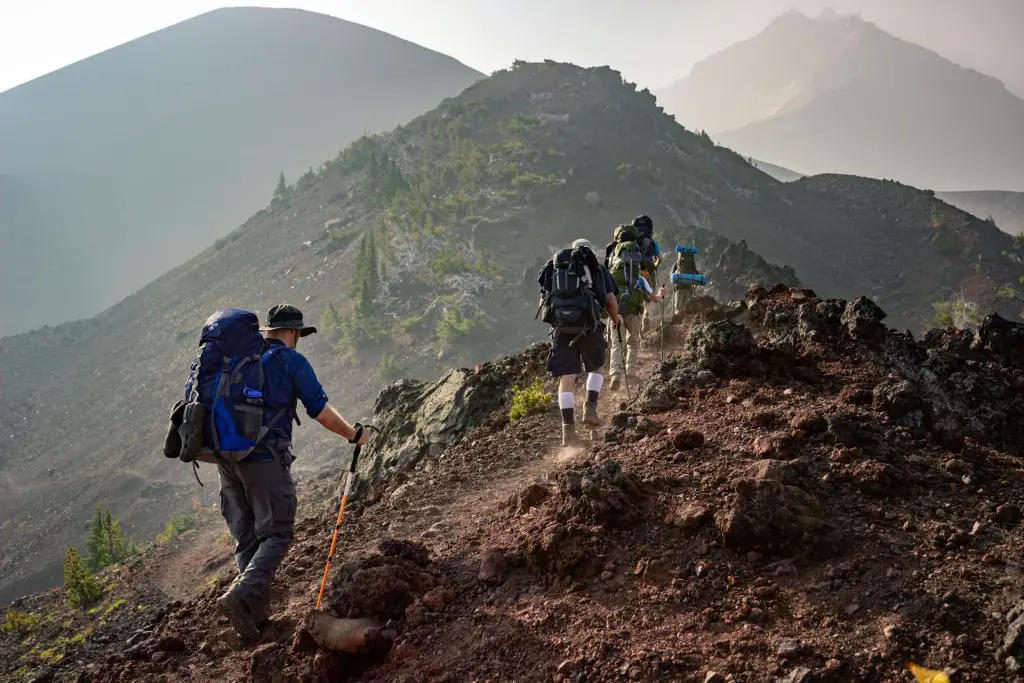Hiking is a wonderful way to reconnect with nature, get some fresh air, and enjoy the beauty surrounding us. Regardless of how long the trek is, preparing well is crucial for a fun and safe outing.
Each item you carry can make a difference, whether it’s for your comfort or for handling the unexpected. Understanding essential gear and clothing options will ensure that you’re ready for whatever Mother Nature has in store while maximizing your enjoyment on the trail.
Clothing Essentials
Comfortable clothing is the cornerstone of any successful hike. Start with moisture-wicking base layers, which help draw sweat away from your skin. Synthetic fabrics or merino wool are great choices. In cooler weather, layering is essential. Add insulating layers like fleece or down jackets to regulate your body temperature.
Choose durable, flexible hiking pants made from synthetic materials, which provide freedom of movement and protection against the elements.
Consider wearing shorts for warmer conditions while maintaining the right level of sun protection. The right footwear cannot be overlooked. Sturdy hiking boots or shoes offer ankle support and traction on various terrains. Ensure your footwear is broken in to prevent blisters.
A good pair of hiking socks made from wool or a synthetic blend will help maintain comfort and warmth, keeping your feet blister-free. Be cautious with cotton socks; they retain moisture and can lead to discomfort.
Hydration and Nutrition
Staying hydrated is critical, especially during vigorous physical activity like hiking. Investing in a quality hydration system, such as a CamelBak or a reusable water bottle, is a smart decision. Aim to carry at least two liters of water for a day hike, adjusting based on conditions and personal needs.
Proper hydration aids your endurance and helps mitigate the risk of heat-related illnesses on warm days. Besides hydration, nutrition plays a pivotal role in keeping your energy up. Pack light snacks like nuts, energy bars, trail mix, and fresh fruit to keep your energy levels stable.
A compact mini whiteboard perfect for outdoor adventure, can be useful too, enabling you to jot down meal ideas or nutritional goals for your hike. Consider foods that are high in carbohydrates and proteins, as they’ll provide sustainable energy throughout the day. Planning meals ensures you have the necessary fuel for your hike.
Navigation Tools
Understanding where you are and where you’re headed is vital on any hike. For this reason, navigation tools like maps and compasses are indispensable. Familiarize yourself with map-reading techniques and take note of key landmarks along your route.
Digital maps on smartphone apps are increasingly popular; don’t rely solely on your phone, as battery life can be an issue in remote areas.
Relying on a GPS device can further enhance your navigation, but be aware of its limitations, such as dead zones without signal. Carry your chosen navigation tools in an easily accessible place within your backpack. Learning basic orienteering skills provides another layer of confidence while exploring the great outdoors.
First Aid and Safety Gear
No one wants to think about injuries while enjoying a hike, but accidents can happen. Carry a well-stocked first aid kit tailored for hiking – it should include adhesive bandages, antiseptic wipes, gauze, and pain relievers.
Familiarize yourself with its contents and consider taking a first aid course before heading out. It can be tremendously beneficial in emergencies. It’s equally important to have safety gear.
A whistle and a multi-tool can assist in unexpected scenarios, allowing you to signal for help or manage small tasks along the way. Carrying a flashlight or headlamp ensures you’ll be prepared in case your hike runs longer than anticipated. First aid knowledge paired with the right tools empowers you to handle unforeseen circumstances effectively.
Using caution while hiking improves your overall experience and promotes safety, allowing you to relax and enjoy your time outdoors.
Weather Protection
Appropriate weather protection is crucial when planning a hike. Understanding weather patterns helps in making informed choices about clothing and gear. Carry a lightweight, water-resistant jacket to shield against unpredictable rain or wind. Being wet can lead to discomfort and hypothermia, making it vital to pack accordingly.
Sun protection should not be overlooked. Apply sunscreen liberally and regularly, especially on exposed skin. Wearing long-sleeved shirts and UV-protective clothing can significantly lower the risk of sunburn. If you’re hiking at altitude, UV rays are more intense. Sunglasses with UV protection can help guard your eyes while you enjoy stunning vistas.
Backpacks and Carry Systems
Selecting the right backpack is essential for effectively carrying your gear. Look for hydration-compatible backpacks or those that can comfortably fit all your essentials without weighing you down. Comfort and fit are paramount; try on various packs to find one that suits your frame and meets your storage needs.
Consider features such as padding in straps and hip belts, which enhance comfort during long hikes.
Proper weight distribution in your pack helps maintain balance as you navigate various terrains. Organize items logically, ensuring heavier items are packed closer to your back, making for easier carrying. Easily accessible pockets allow for quick retrieval of frequently needed items like snacks and navigation tools.

Recognizing the value of thoughtful preparation maximizes the experience in nature while minimizing potential complications. Venture outdoors equipped with knowledge and the right gear, ensuring a fulfilling connection with your natural surroundings.



